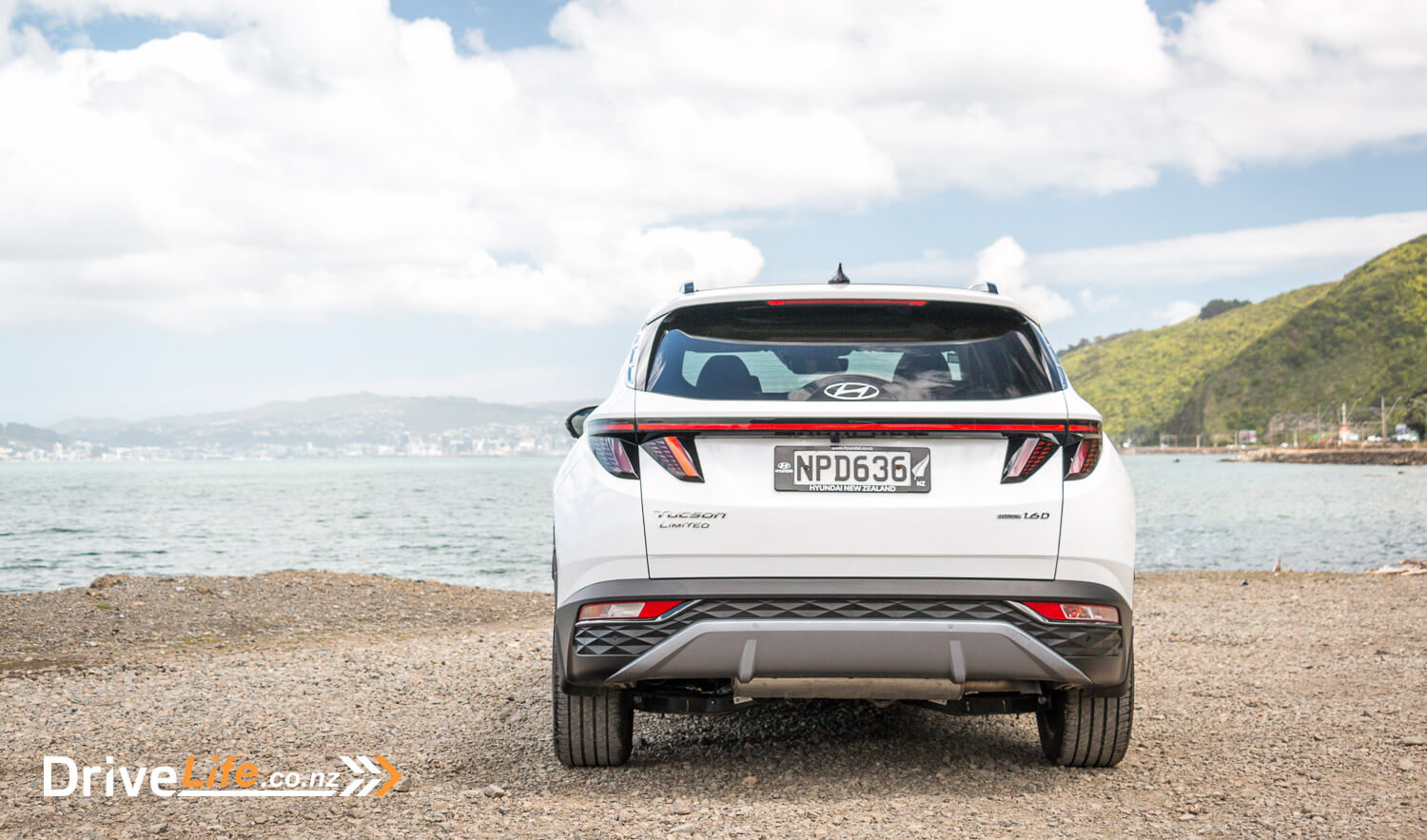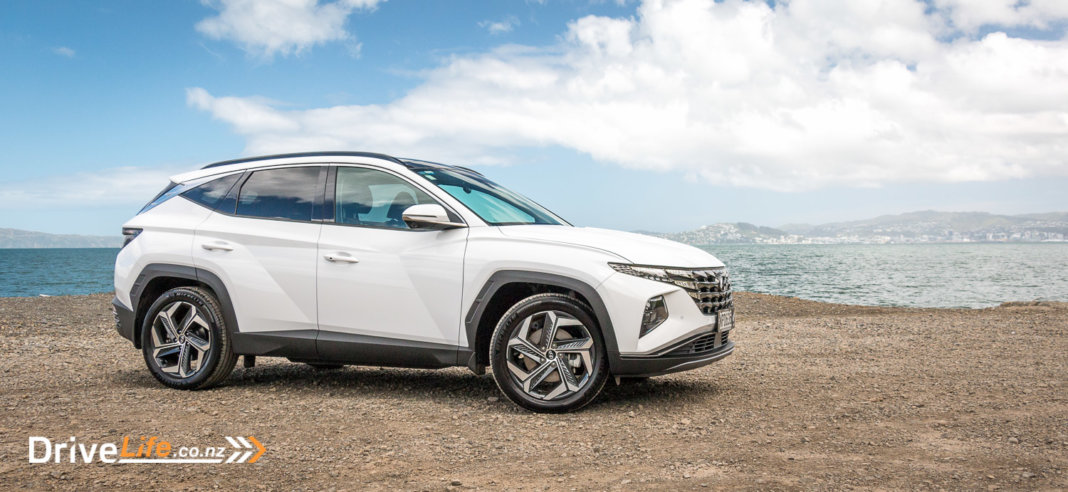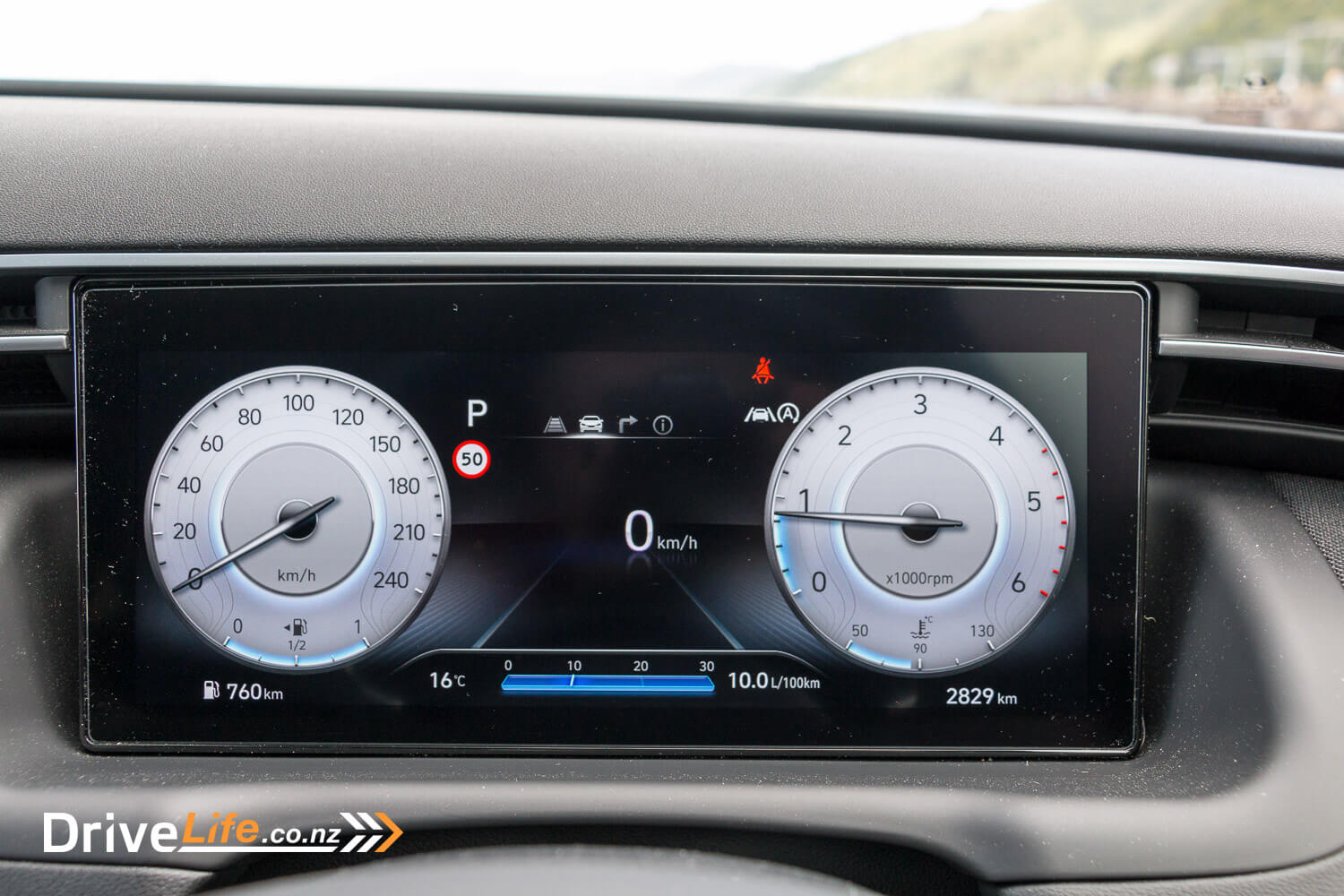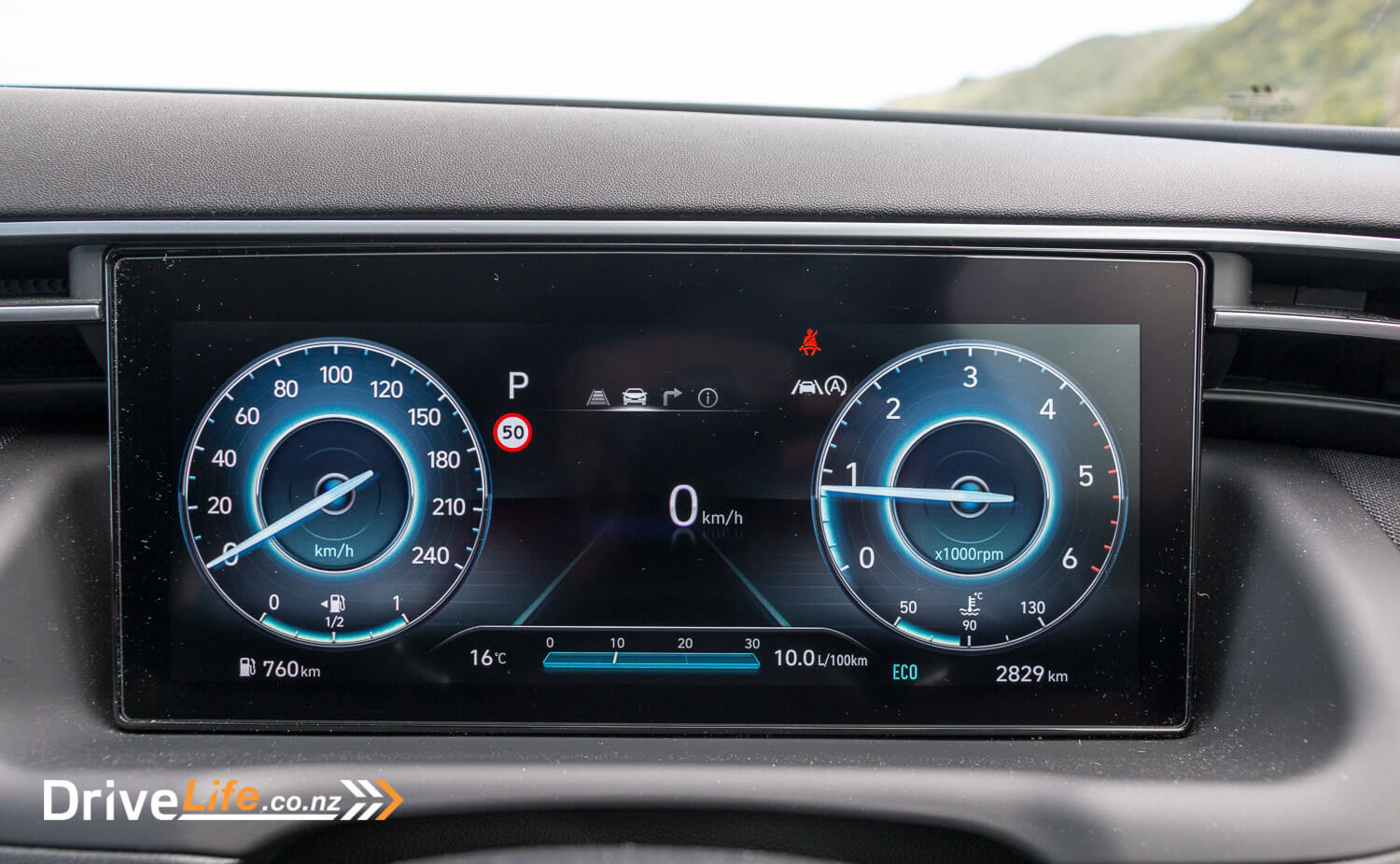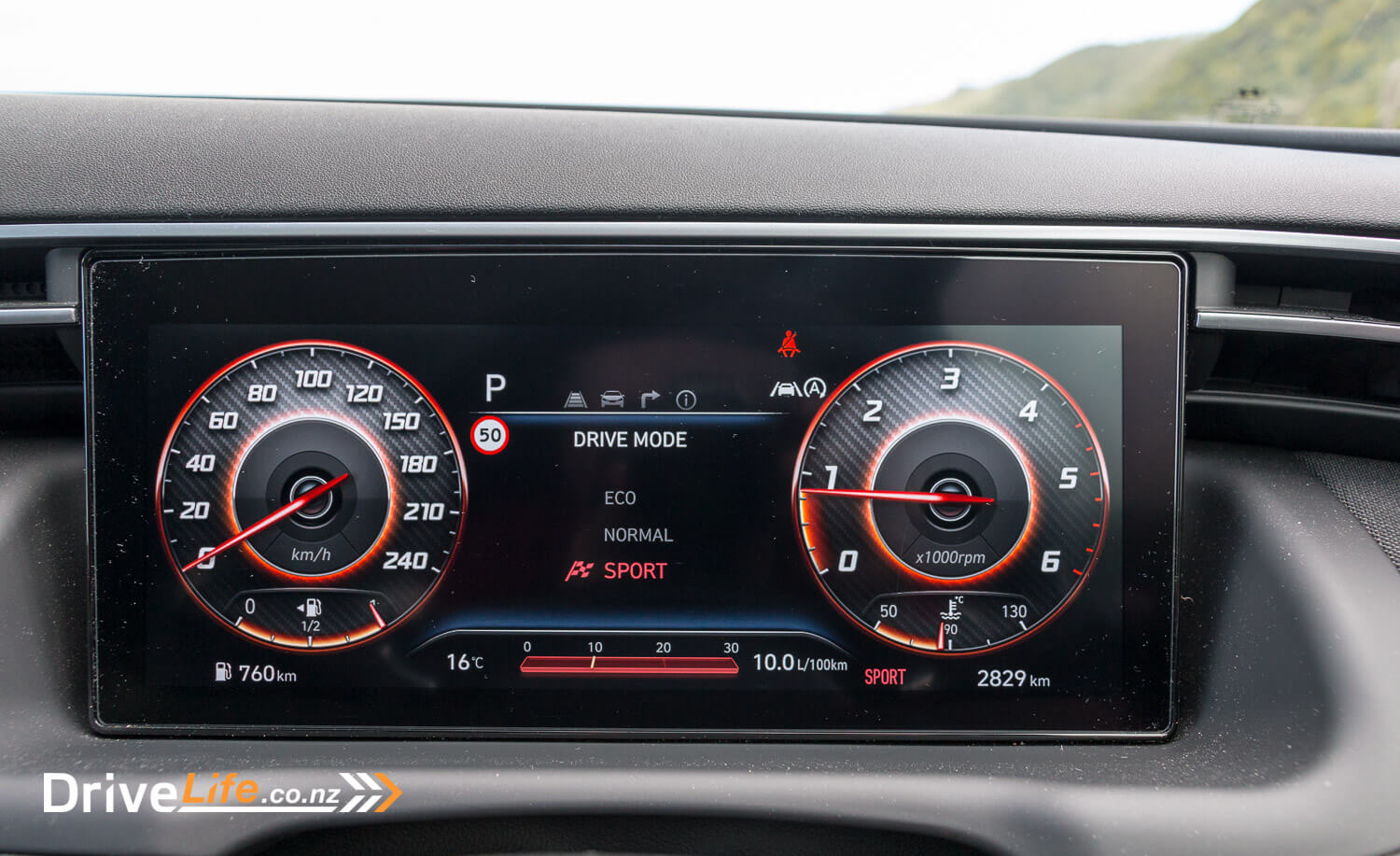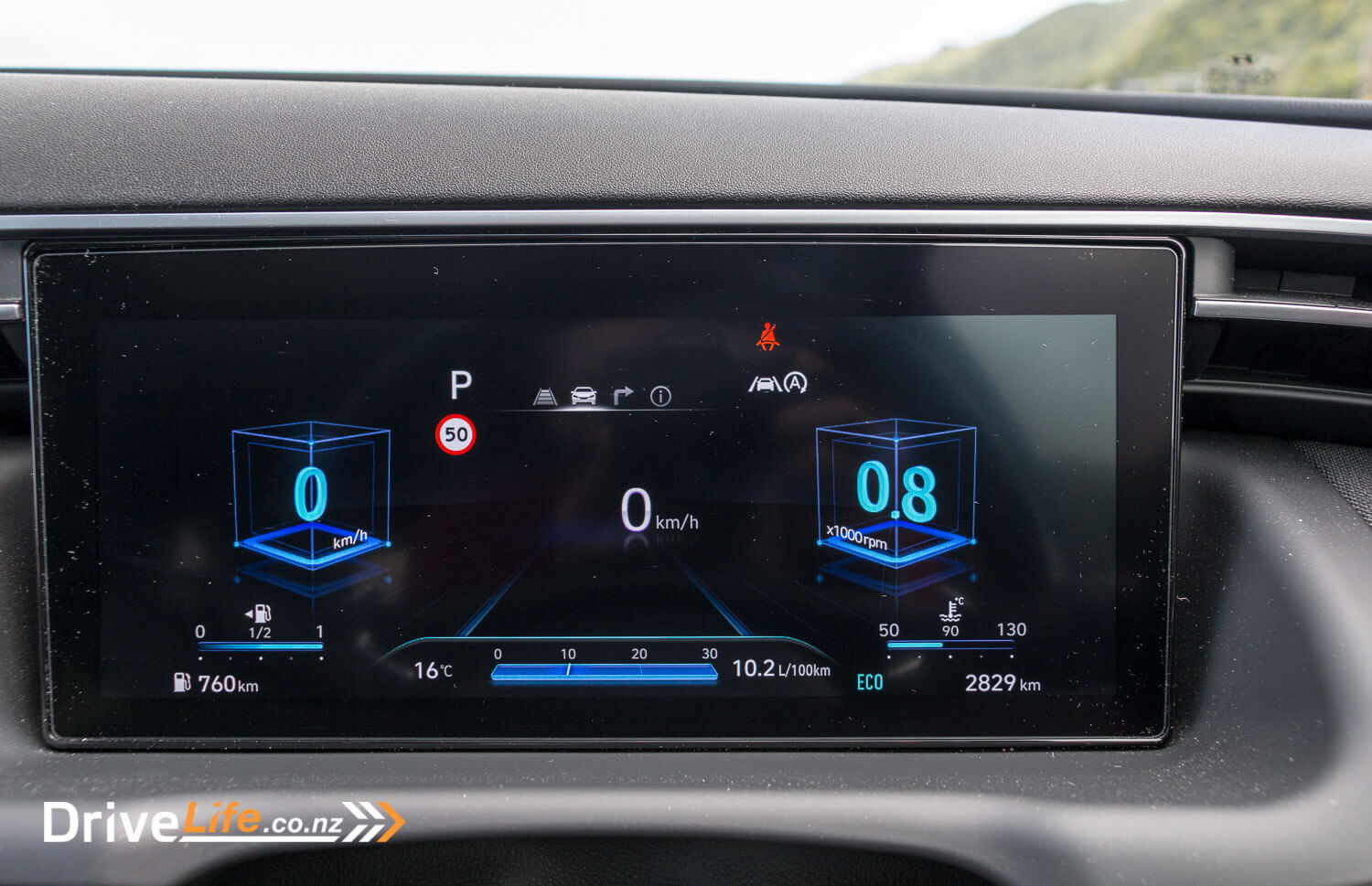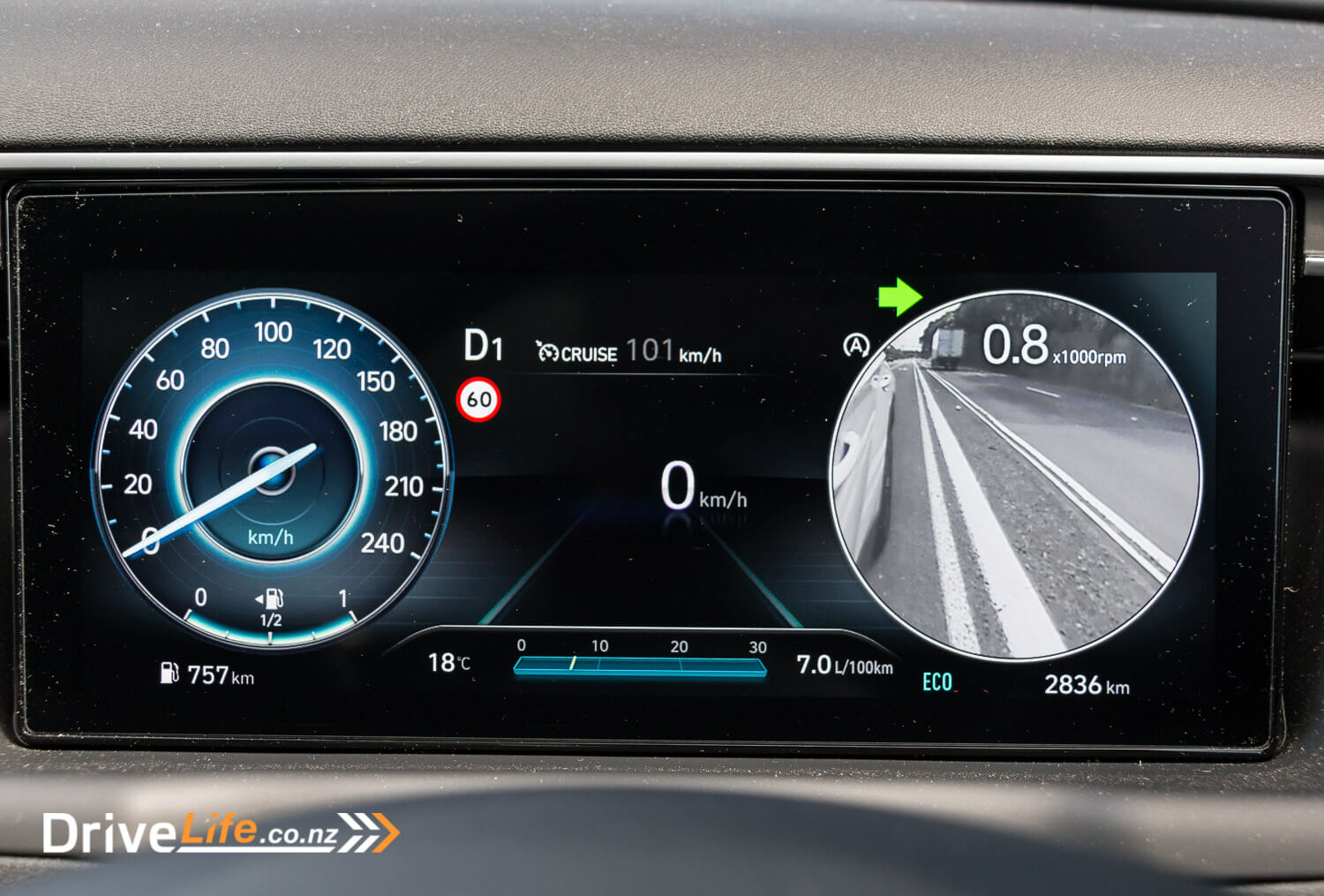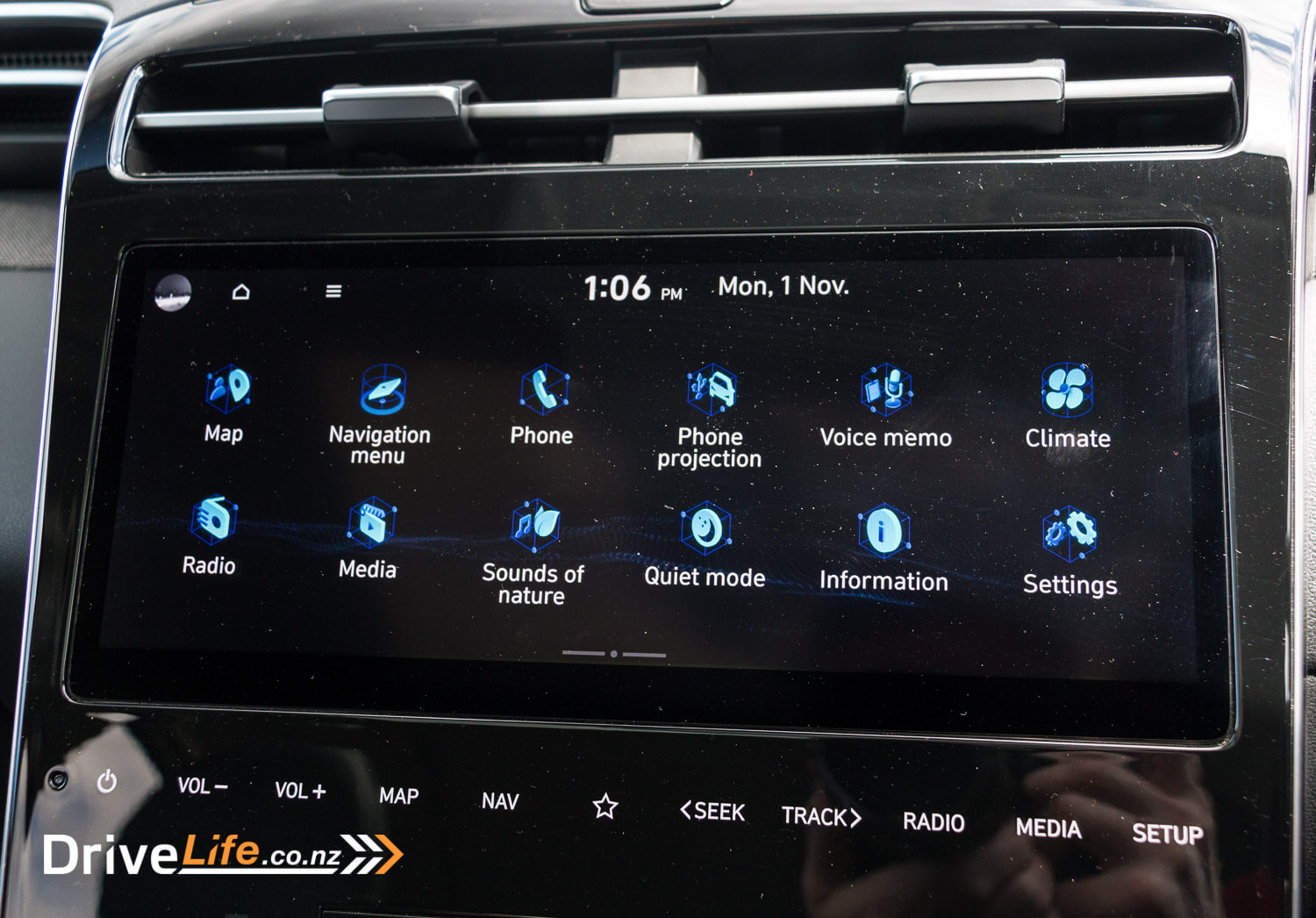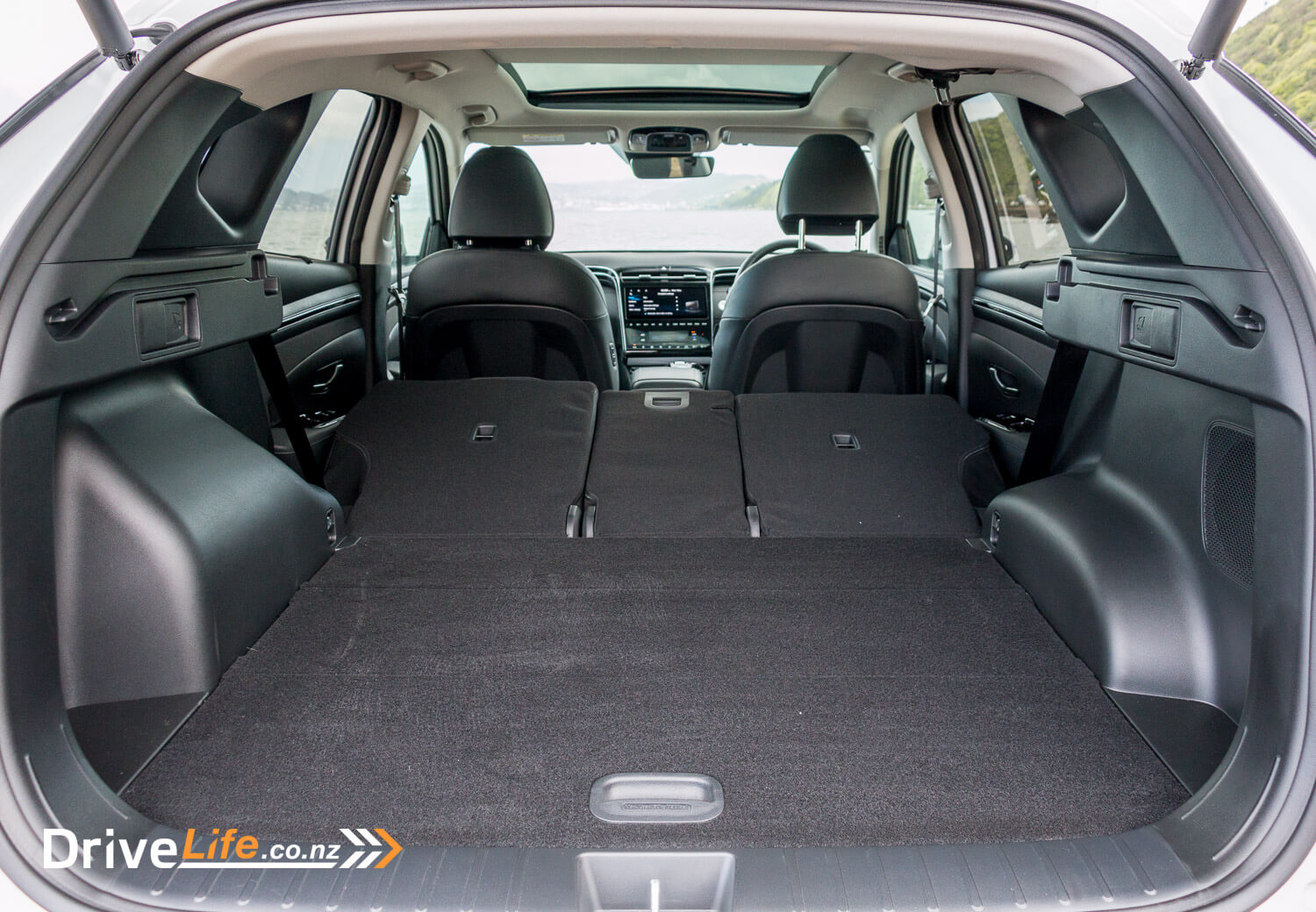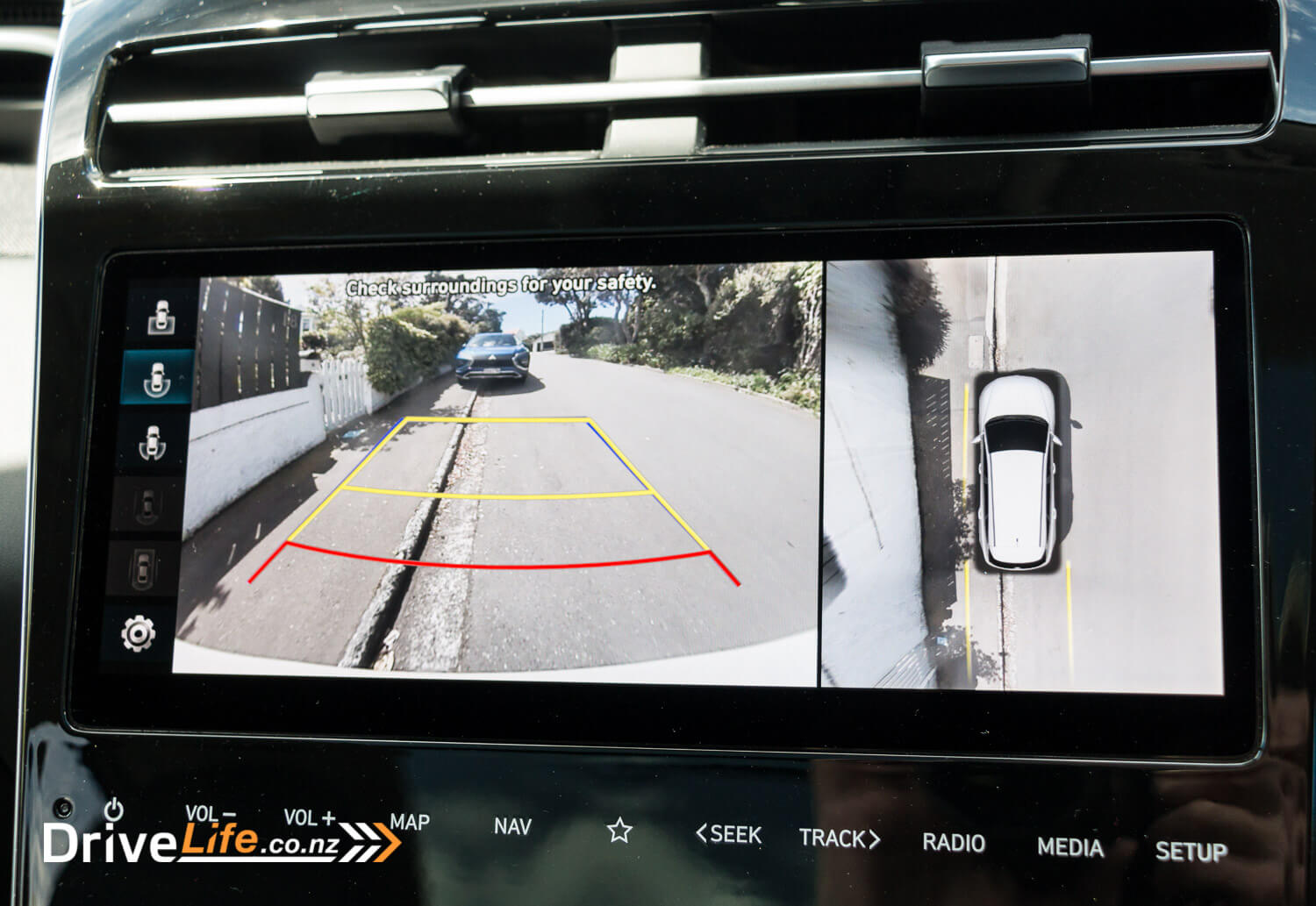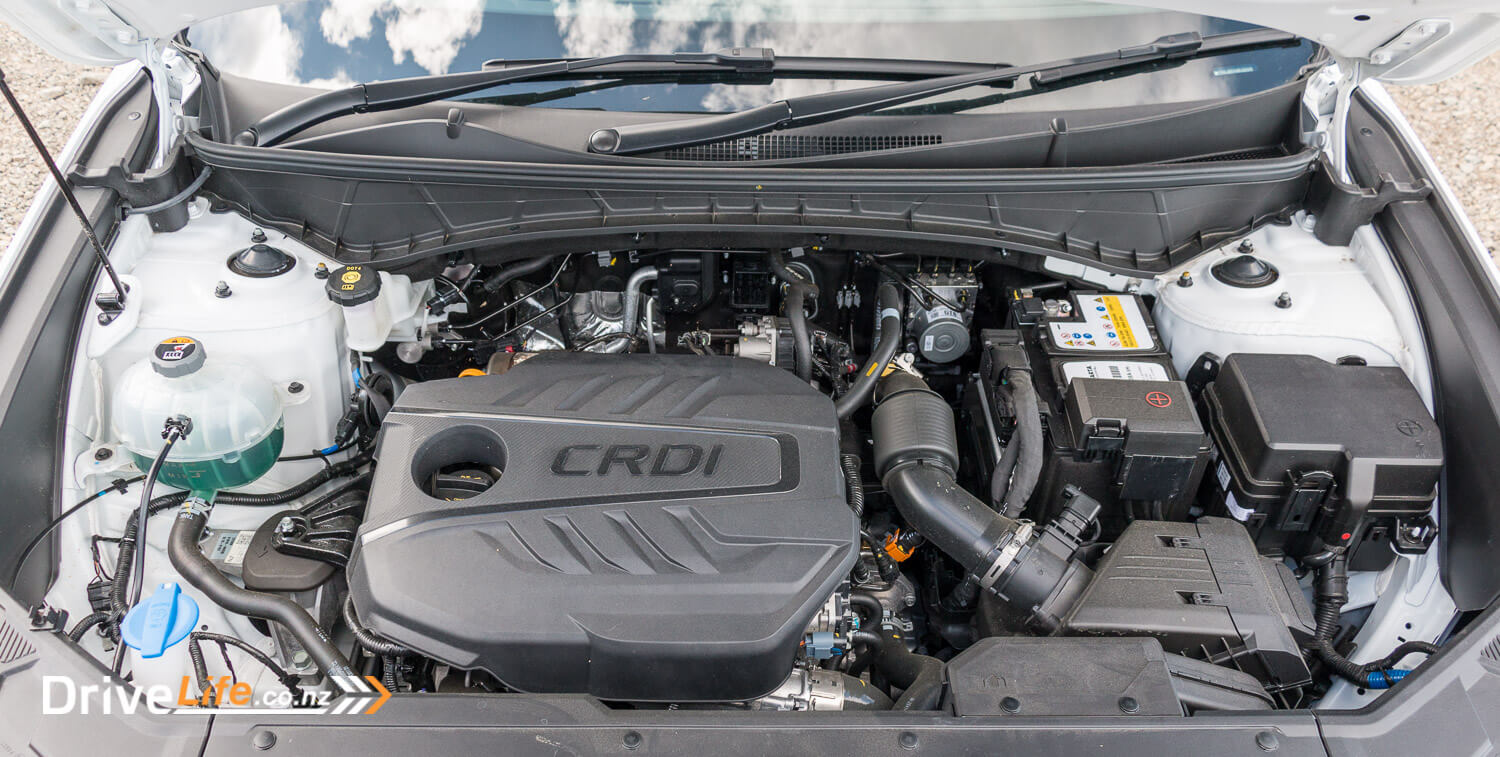I have fond memories of testing the previous Tucson, and concluding that it was rather good. That was back in 2015, and the medium SUV market has come on in leaps and bounds since then.
Here we are with a new, bigger, more high-tech, and arguably better-looking Tucson. I drove it for a week to see how it had changed.
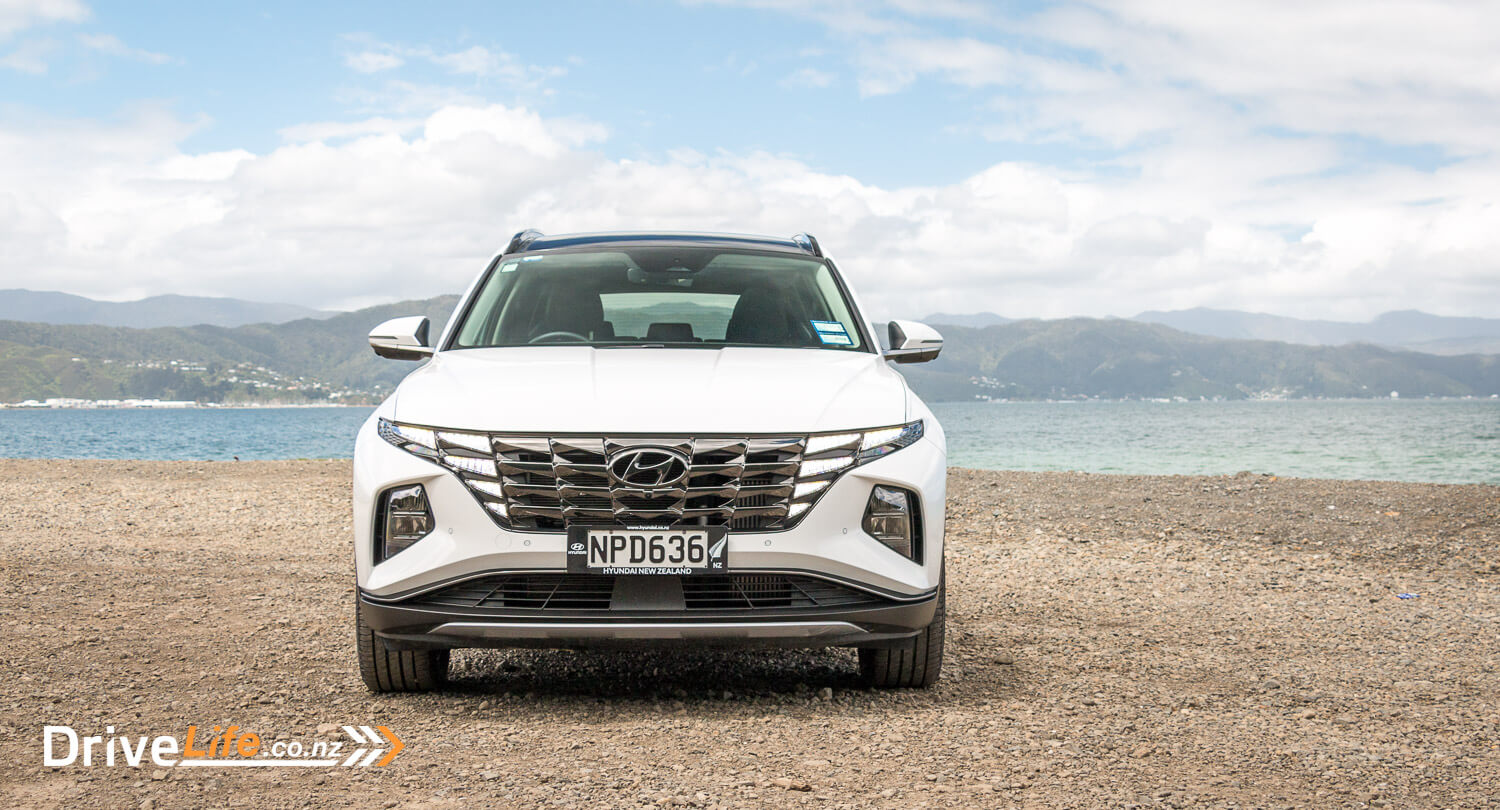
What We Like and Dislike About The 2021 Hyundai Tucson CRDi Limited
| What we like | What we don’t like |
| Looks great High spec Great stereo Good technology Interior storage and space | Collision avoidance false alarms Low-speed power delivery surges |
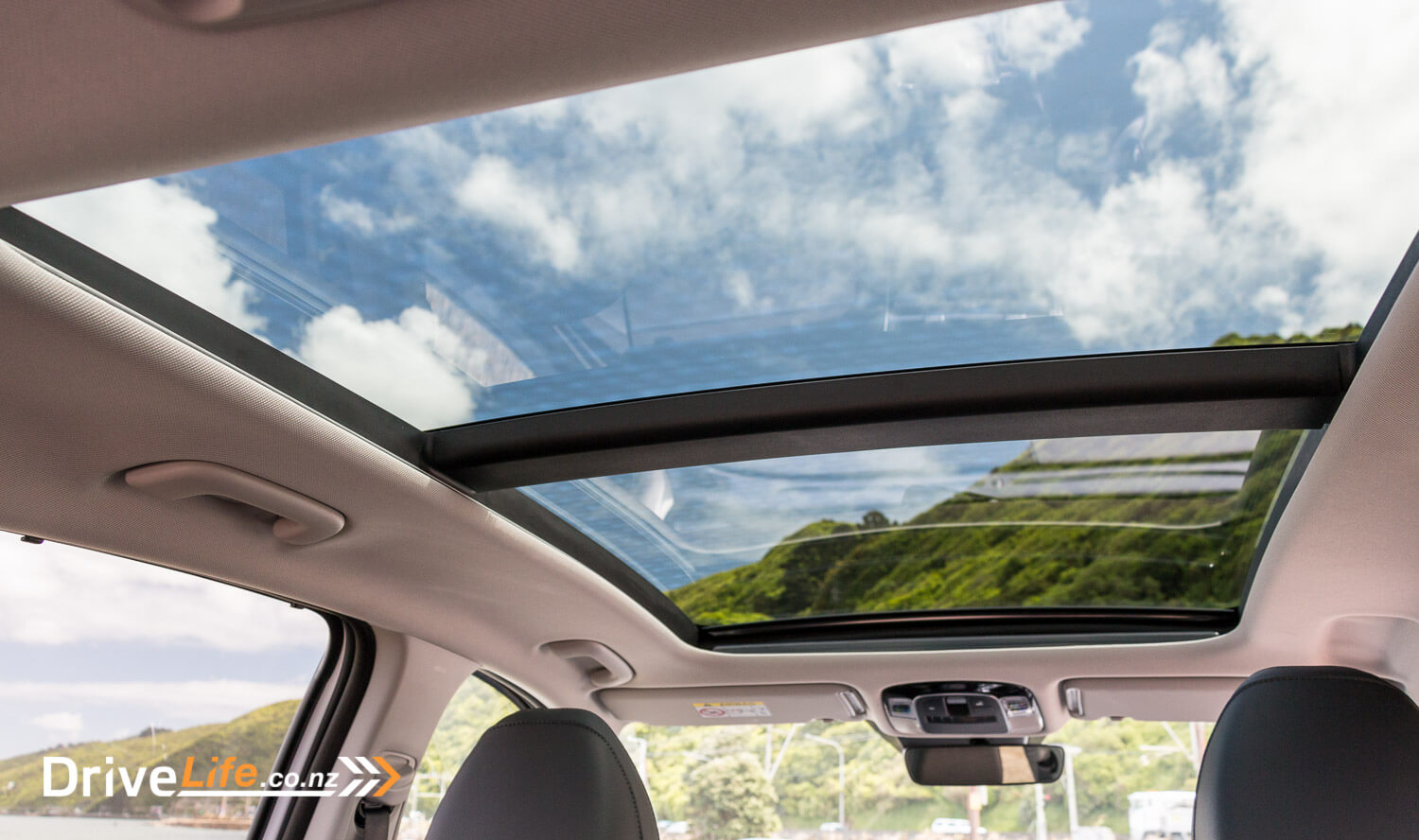
What’s In The 2021 Hyundai Tucson Range?
There’s rather a lot of choice actually: 11 models, from the $46,990 2.0-litre MPI Petrol right up to the $72,990 1.6-litre turbodiesel CRDi Limited which we are reviewing here. Visually there’s not that much difference between the models, apart from the N-Line which stands out with its body-coloured arch trims.
Under the skin there’s a range of five trim levels, three engines and two transmissions.
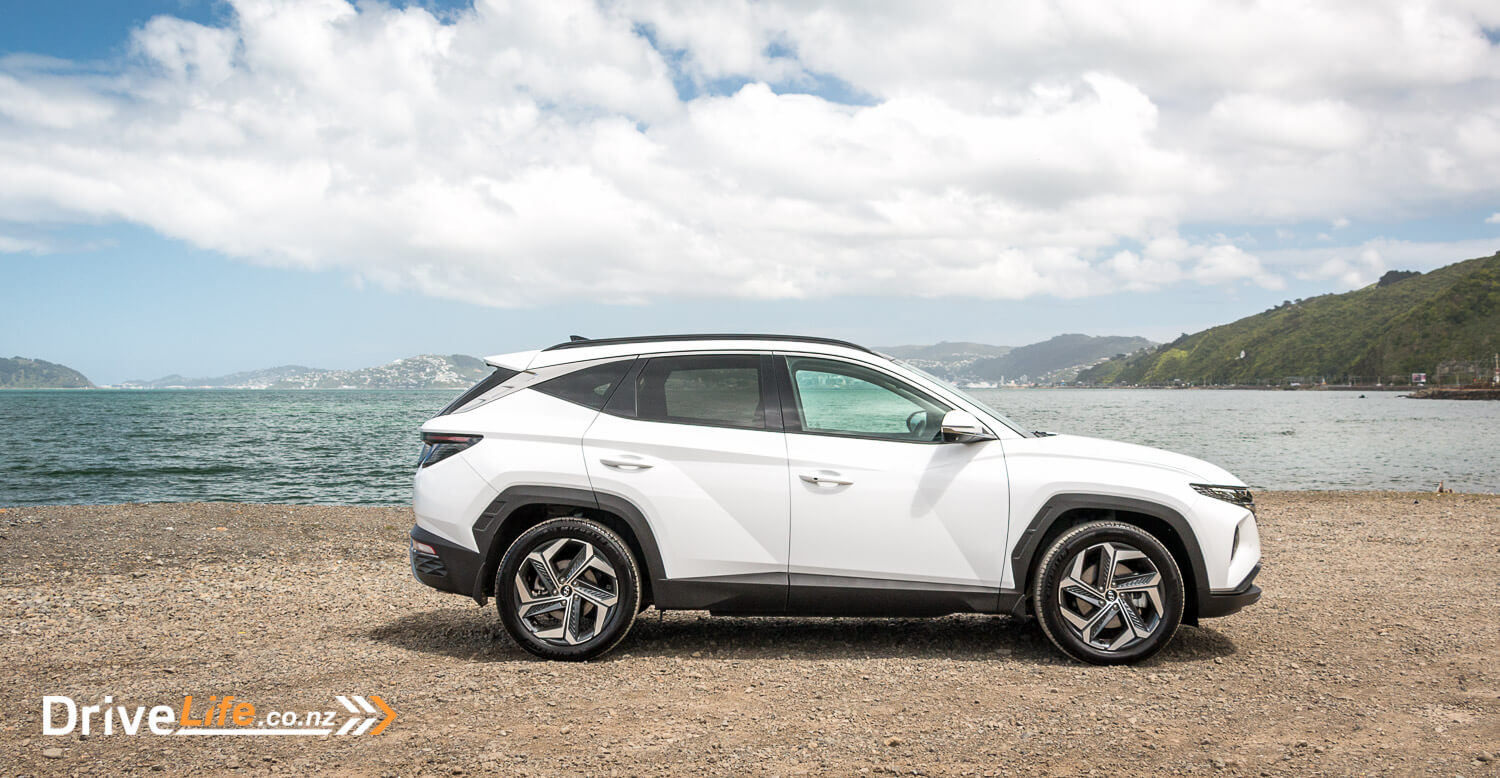
2021 Hyundai Tucson Standard Equipment Highlights
- Electronic Parking Brake (EPB) with auto hold function
- ABS braking with Electronic Brake-Force Distribution (EBD)
- Brake Assist System (BAS)
- Electronic Stability Control (ESC)
- Traction Control System (TCS)
- Vehicle Stability Management (VSM)
- Blind-spot Collision Avoidance assist (BCA)
- Blind-spot Collision Warning (BCW)
- Blind-spot View Monitor (BVM)
- Rear Cross-traffic Collision Warning (RCCW)
- Rear Cross-traffic Collision Avoidance assist (RCCA)
- Forward Collision-Avoidance assist with Junction Assist (FCA-JX) – car, pedestrian & cyclist
- Lane Keeping Assist (LKA)
- Lane Following Assist (LFA)
- Smart Cruise Control (SCC) with stop & go
- Driver Attention Warning (DAW)
- High Beam Assist (HBA)
- 7 Airbags (dual front, side, curtain & single centre airbag)
- Front seatbelt pretensioners and load limiters
- ElectroChromatic rear-view Mirror (ECM)
- Auto lights and wipers
- Front and rear park assist system
- Surround View Monitor (SVM)
- Panoramic sunroof
- LED headlights
- Keyless entry and start
For a full list of specs and options available for the 2021 Hyundai Tucson jump on over to the Hyundai New Zealand website
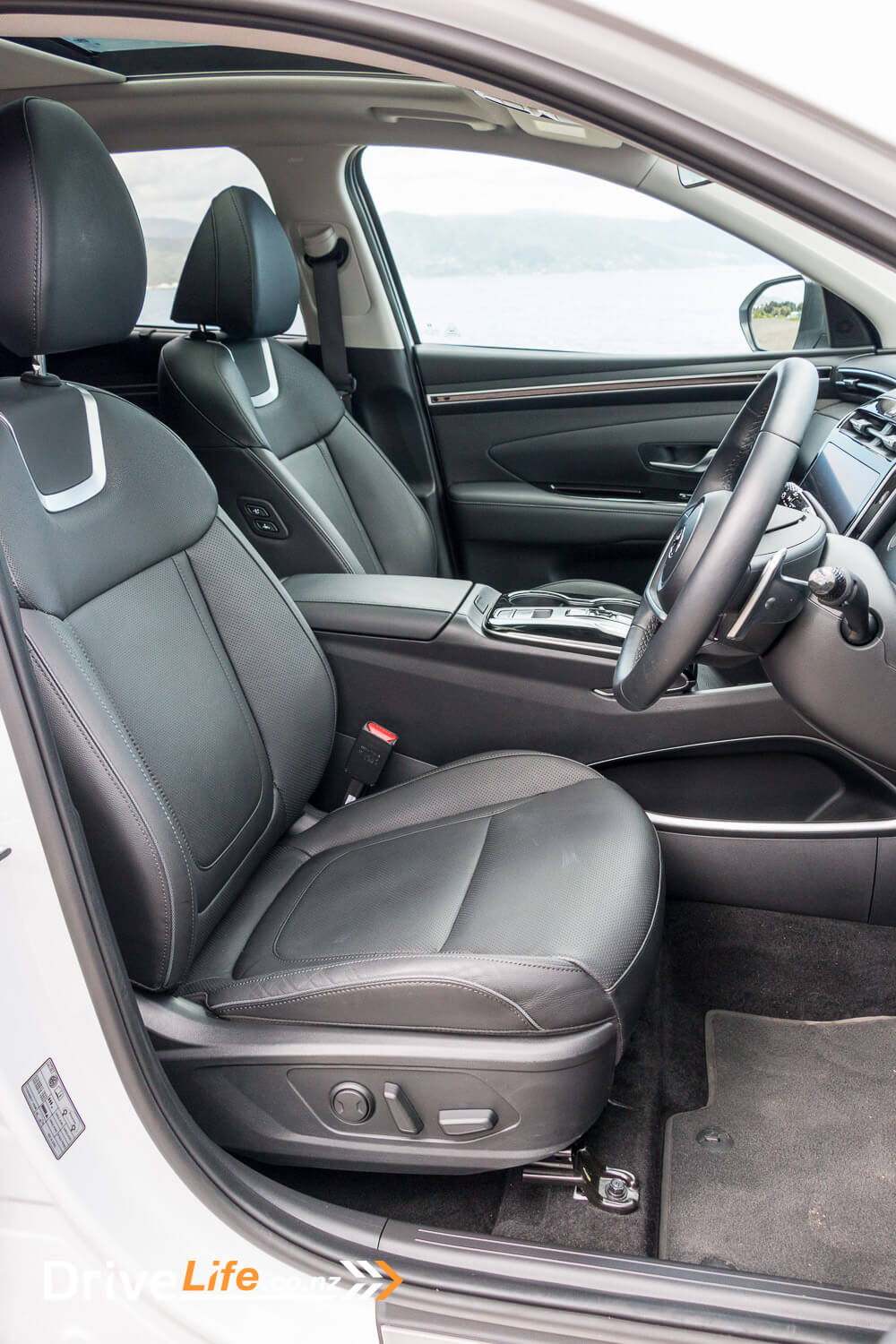
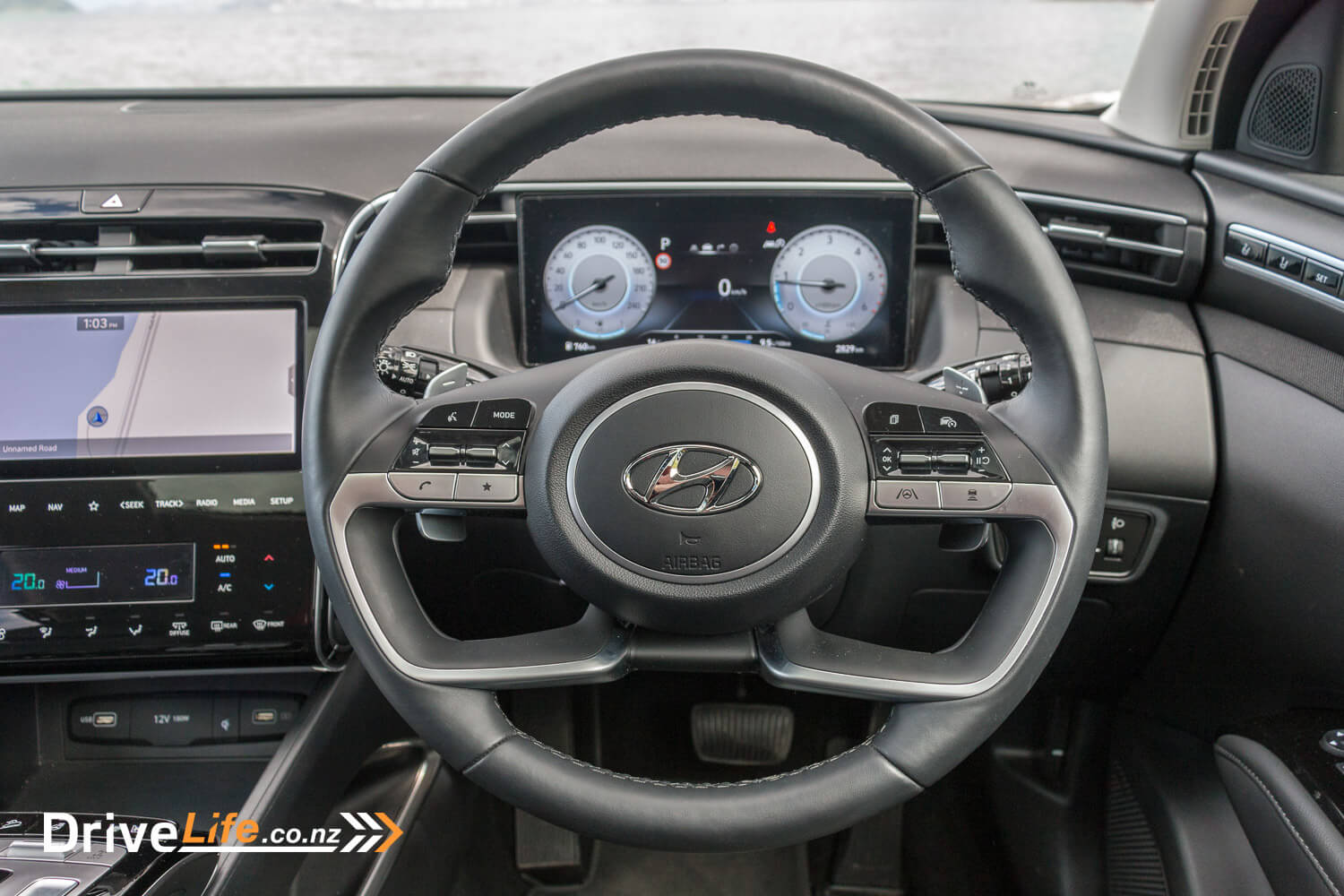
How Does The 2021 Hyundai Tucson CRDi Limited Compare To Its Competition?
| Make/ Model | Engine | Power/ Torque kW/Nm | Seats | Fuel L/100km | Towing | Boot Space, litres | Price |
| Audi Q5 40 TDI Advanced | 2.0-litre 4-cylinder turbo diesel | 150/400 | 5 | 5.4 | 2400 | 550 | $93,900 |
| BMW X3 sDrive 20i xLine | 2.0-litre 4-cylinder turbo diesel | 135/300 | 5 | 7.1 | 2400 | 550 | $89,900 |
| Kia Sorento Premium | 2.2-litre 4-cylinder turbodiesel | 148/440 | 7 | 6.1 | 2500 | 616 | $76,990 |
| Hyundai Tucson CRDi Limited | 1.6-litre 4-cylinder turbodiesel | 100/320 | 5 | 5.2 | 1650 | 620 | $72,990 |
| Skoda Kodiaq TDI Sportline | 2.0-litre 4-cylinder turbo diesel | 147/400 | 7 | 5.4 | 2000 | 720 | $72,990 |
| Mitsubishi Pajero Sport VRX | 2.4-litre 4-cylinder turbodiesel | 135/437 | 7 | 8.0 | 3100 | 502 | $68,990 |
| Peugeot 5008 GT | 2.0-litre 4-cylinder turbo diesel | 130/400 | 5 | 4.7 | 1500 | 952 | $62,990 |
| Mazda CX-5 GSX | 2.2-litre 4-cylinder turbodiesel | 140/450 | 5 | 5.7 | 2000 | 455 | $49,990 |

First Impressions Of The 2021 Hyundai Tucson CRDi Limited
I immediately liked the looks of the new Tucson, and it continued to grow on me the longer I looked at it. It’s a lot more angular then the old one, much more modern-looking using Hyundai’s latest design language. I like the chunky arches, the slashes moulded into the doors, and the two-colour five-spoke wheels. It looks sleek and muscular from the side.
The front has an enormous grille – something almost every manufacturer is doing with varying degrees of success. Hyundai has nailed it with the Tucson. It’s a single cohesive shape split into segments, integrating headlights and DRLs, with some segments lighting up, some not. I think it works really well and is a bold and different look.
The tail lights are split into four units, the design of which echoes the segmented look of the front, and there’s a red LED light strip across the width of the boot. Lower down there’s more of the segmented look on the bumper and a moulded silver section that looks like a bash plate. The exhaust is tucked away underneath on this diesel model and Hyundai have thankfully resisted the current trend of fake exhausts or exhaust trims. The whole design works really well and looks smart and modern.
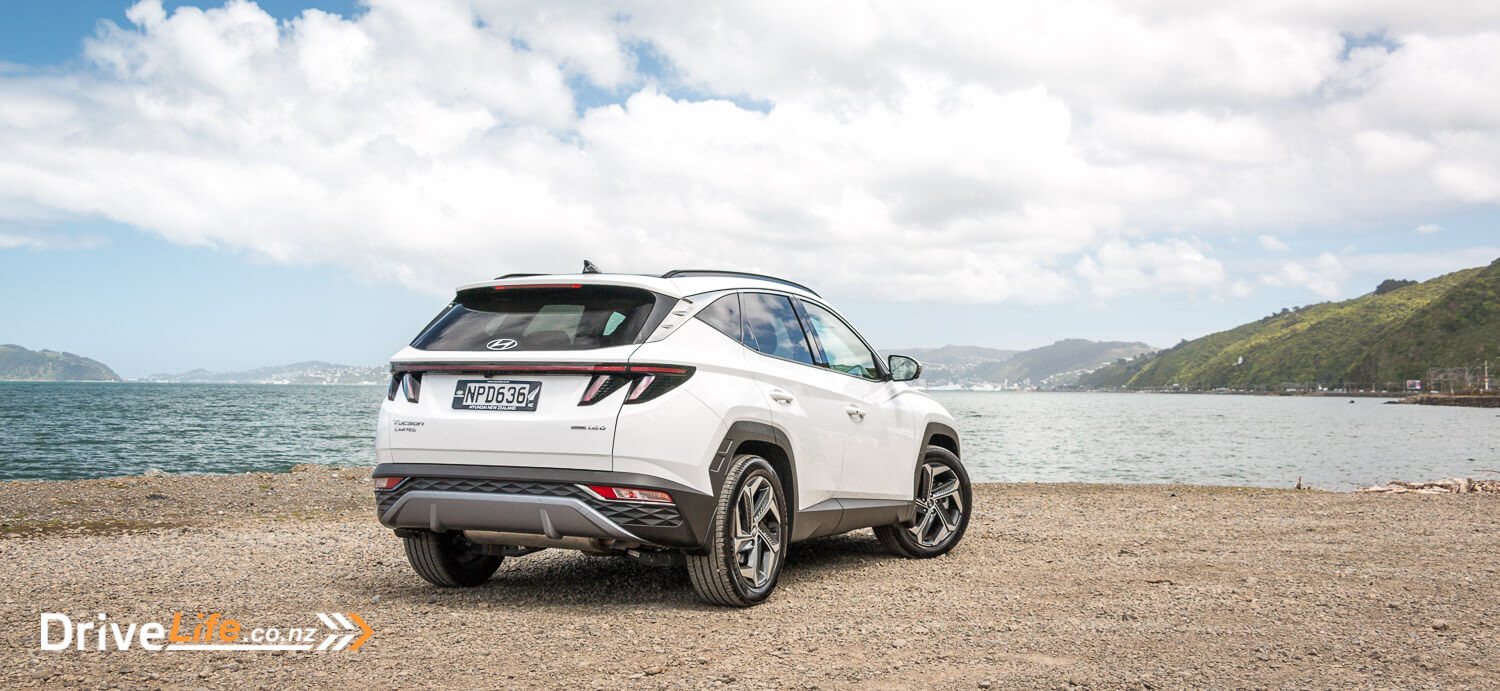
What’s The Interior Like In The 2021 Hyundai Tucson CRDi Limited?
Just like its exterior, the interior of the Tucson has changed significantly for the better. Not that the old one was bad, but Hyundai’s designers and engineers have really been working hard. The dash is a simple-looking, flowing design with twin brushed metal strips above and below the long, narrow air vents. These strips flow in a continuous line right along the doors, and down the sides of the centre console. They look great and give a wrap-around cockpit feel. They have integrated ambient lights, and the memory seat buttons are set into the middle on the driver’s door.
The centre console has a 10.25” widescreen touchscreen, neatly integrated into the piano black console, with touch buttons underneath and a small separate display for aircon settings. I love physical buttons, but these touch controls work really well, are well-spaced and logically laid out. At the bottom you get a rubberised cubby with Qi wireless charger, power and two USB ports. For some reason the Qi charger didn’t like my iPhone and refused to detect it for charging. In front of the charger there are physical buttons for a few useful functions such as seat and steering wheel heating, auto parking and manually turning on the parking sensors and cameras.
There’s an 8-speaker Krelll audio system with a subwoofer and it sounds great. Android Auto and Apple Carplay are included, and phone pairing went smoothly and easily with my iPhone, and always re-connected quickly and seamlessly.
Fortunately, Hyundai have not done what a lot of European manufacturers are doing with touch controls, and have stuck with proper physical buttons and toggles on the steering wheel for stereo, menus and cruise control. These work so much better and are much easier to use without needing to take your eyes off the road.
They’ve gone for the tacked-on iPad look for the 10.25” fully-digital driver’s display. It’s very neat and minimal, with no cowl above it, but I didn’t have any issues with sun or light glare in any conditions. Various displays can be selected or it can be set to change with drive mode – red dials for Sport mode for example, or even a slightly odd design with speed and revs in numbers inside 3D cubes. All designs follow the fairly-ubiquitous and familiar two-dial style. The quality and resolution of both displays is excellent.
The driver gets an 8-way electrically adjustable seat with memory, the passenger 6-way electric. Front seats can be heated or cooled, and rear seat passengers also get heated seats, and their own aircon zone, making it 3-zones altogether. The seats are comfortable and all the adjustment means it’s easy to find the right driving position.
Rear seats are also comfortable, with plenty of space and leg room. The seats are split 40/20/40 which gives a lot more flexibility for combining larger loads and passengers than the more usual 60/40. The angle of the rear seat backs can be adjusted too which is great for getting comfortable on longer journeys. There are integrated pull-up sun blinds in the rear doors, always a great thing to have if you have young kids. Older kids just seem to like playing with them. There are two USB ports for rear-seat occupants and various cubbies front and rear for storing your stuff, including a generous centre console cubby.
The boot is a generous 620 litres and a huge 1,799 litres with the back seats folded. This is despite there being a full-sized alloy wheel and tyre under the boot floor. The tailgate is electric with the always useful kick-to-open function.
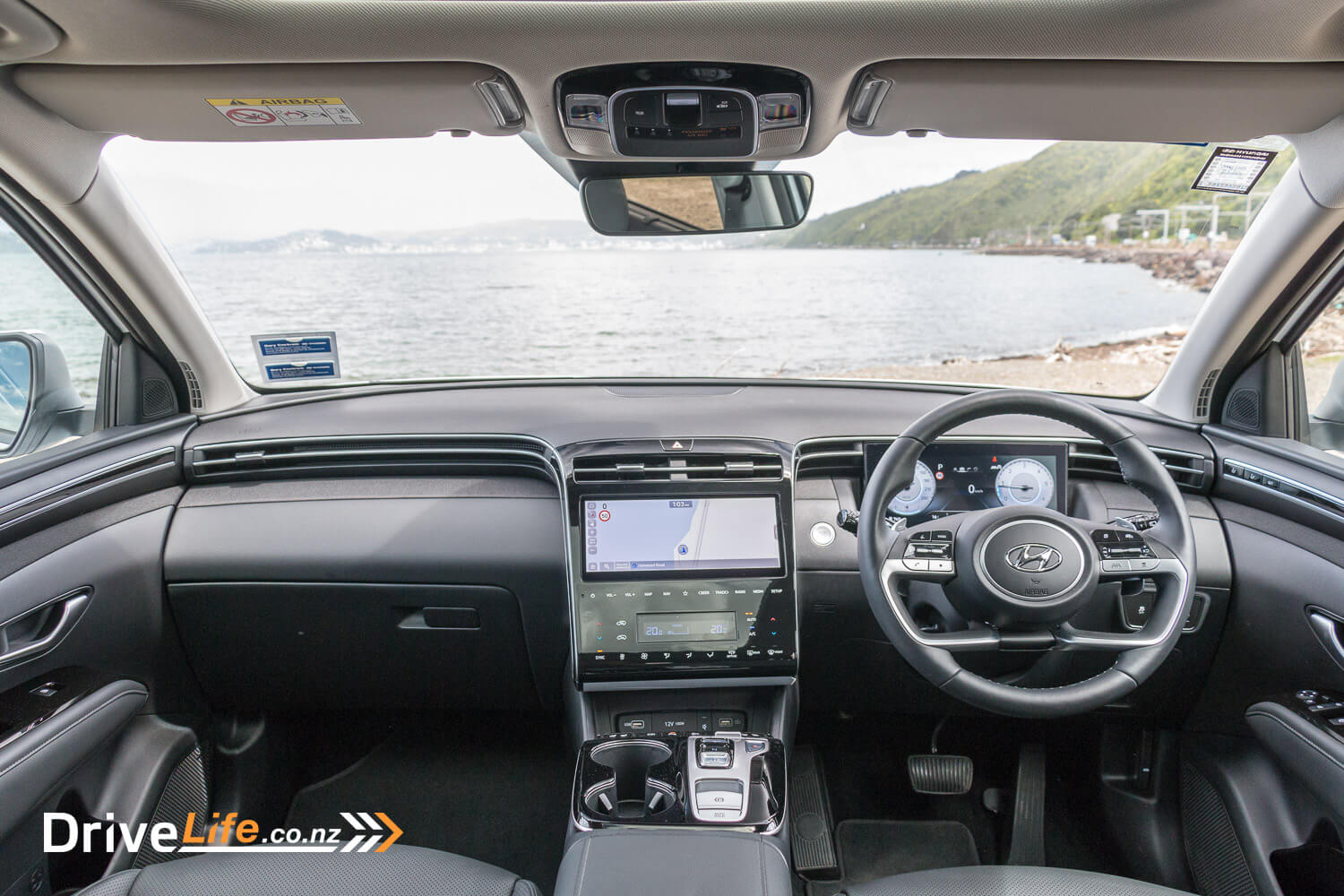
What’s The 2021 Hyundai Tucson CRDi Limited Like To Drive?
When I collected the Tucson I was in a bit of a hurry to get to a meeting, so I pretty much just jumped in and started driving. The push-button gear shift took a little getting used to, though it will be very familiar to anyone who has driven an Ioniq EV. After a while you get used to the different beeps it makes when hitting forward or reverse, and can be sure of what gear you selected without glancing down. Otherwise everything just fell to hand naturally and worked. And that’s pretty much how the week continued with the Tucson. It’s comfortable, with a good ride quality. Road and engine noise is generally well-damped, though it doesn’t let you forget it’s a diesel.
That small 1.6-litre turbo diesel engine feels surprisingly torquey and powerful, and if you drive it harder, the Tucson feels pretty quick. It even has a Sport mode, though arguably Sport Mode is a bit out-of-place on a diesel family SUV. It’s not a sports car, and driving it hard just feels kind of unnecessary. Treat it properly and most of the time it will reward you with appropriate family-car performance and gear shifts so smooth you’ll hardly notice them. It’s a dual-clutch transmission (DCT) and has the typical DCT characteristic of being more jerky at low-speed shifts. The power delivery can feel a little “surgey” when setting off from a standstill, as the turbo kicks in and ramps up the torque, but you soon get used to driving around that.
In traffic, the smart cruise control works very well, braking smoothly and coming to a complete stop when needed. There is steering assist, which can be a bit patchy on New Zealand roads, especially state highways, where our road markings aren’t always consistent or well-defined. I’ve remarked on this with other cars too, it’s not unique to the Tucson.
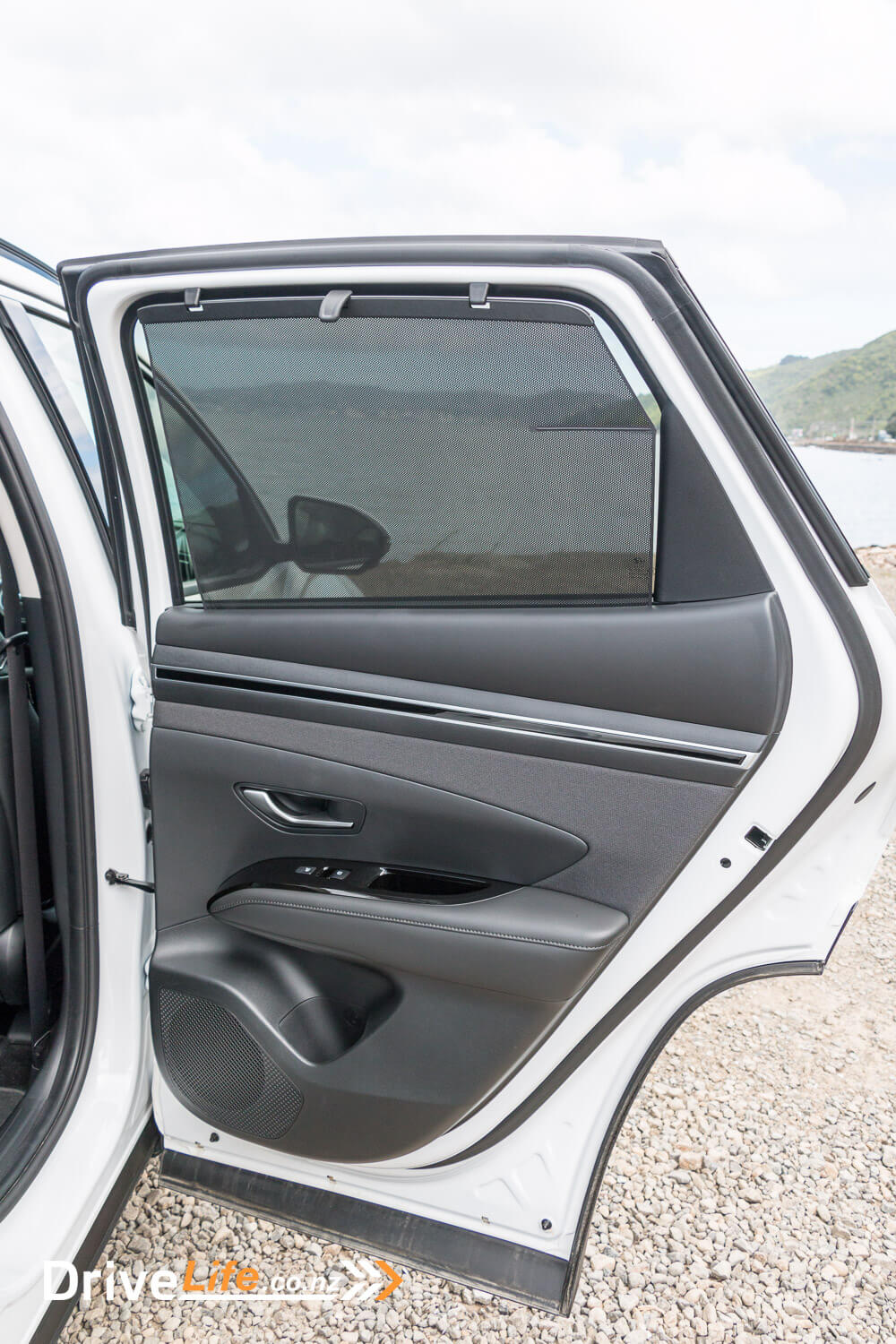
I live in a Wellington suburb with very tight and narrow roads and lots of parked cars, and in this environment I found the Tucson’s collision avoidance system to be a little bit too keen. It never physically intervened, which it has the ability to do, but it did give me a few false alarms with red flashing warnings and alerts.
One really cool Hyundai feature that the Tucson has is the blind-spot cameras, where if you indicate left or right, the dial on that side of the driver’s display changes to a live camera view. It’s a great spot-check and could easily save you from missing seeing a vehicle that’s in your blind spot. There’s blind-spot detection as well which illuminates a light in the mirror to warn you of objects there, so you ‘re pretty well protected. This system also alerts you when you are getting out of the car and a vehicle is approaching.
The side cameras combine with the front and rear ones to give a top-down 360-degree view on the main screen, with moving guidelines, which is fantastic for low-speed manoeuvres. It’s like a cheat mode for parallel parking! Hyundai has one of the better systems with clear camera views and some intelligence in shifting camera angles when you get close to an object. It also didn’t freak out too much at my narrow driveway which was about 6cm wider than the mirrors.
Most of my time in the Tucson was shorter journeys, with a couple of slightly longer trips, and the fuel consumption suffered a little because of this. Despite this, over a total of 550km my average usage was 6.4 litres per 100km which isn’t too far above the quoted 5.2.
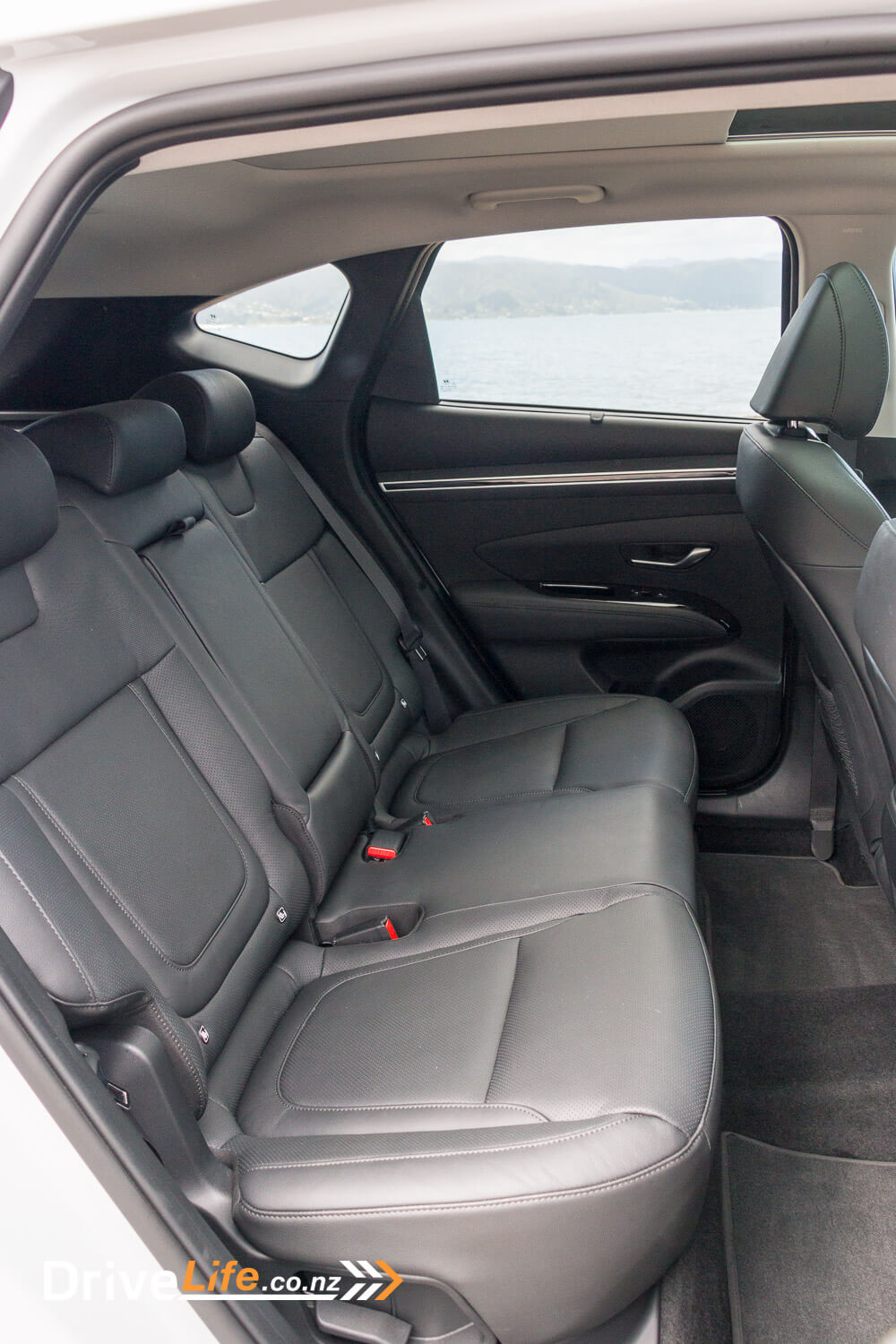
2021 Hyundai Tucson CRDi Limited Specifications
| Vehicle Type | Medium SUV |
| Starting Price | $72,990 |
| Price as Tested | $72,990 |
| Engine | 1.6 litre 16 valve twin overhead cam with common rail direct injection and variable geometry turbocharger |
| Power, Torque kW/Nm | 100/320 |
| Transmission | 7-speed Dual Clutch Transmission (DCT) |
| Spare Wheel | Full size spare wheel & tyre |
| Kerb Weight, Kg | 1,695 |
| Length x Width x Height, mm | 4500 x 1865 x 1650 |
| Cargo Capacity, Litres (seats up/seats down) | 620/1,799 |
| Fuel tank capacity, litres | 54 |
| Fuel Economy, L/100km | Advertised Spec – Combined – 5.2 Real-World Test – Combined – 6.4 Low Usage: 0-6 / Medium Usage 6-12 / High Usage 12+ |
| Towing Capacity Kg, unbraked/braked | 750/1650 |
| Turning circle metres | 11.8 Small: 6-10m / Medium 10-12m / Large 12m+ |
| Warranty | 10 year / 200,000 km anti perforation corrosion body warranty 3 year / 100,000 km mechanical warranty 3 year / 100,000 km roadside assistance package |
| Safety information | ANCAP Rating – 5 Stars – ANCAP Rightcar.govt.nz – 5 Stars – NPD636 |
